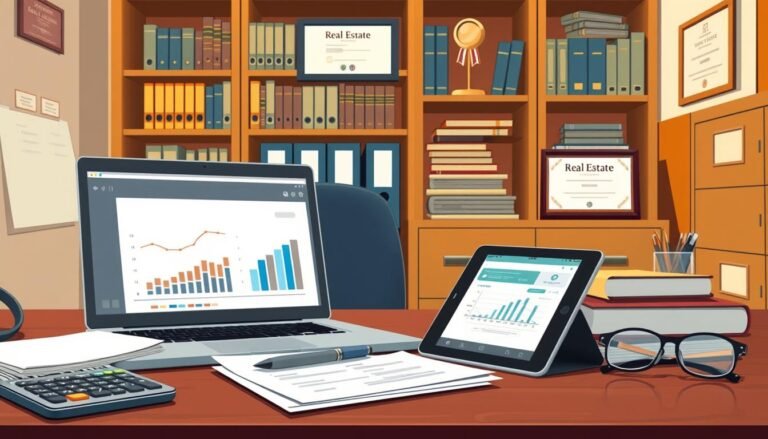Aircraft leasing and financing
Is it better for airlines to buy planes or use aircraft leasing and financing to stay ahead?
In the fast-paced aviation world, choosing between leasing and financing is key to success. This guide looks into aviation financing solutions like operating and wet leases. It shows how these options help manage costs and growth.
Even big names like Aercap and Air Lease Corporation use these strategies. They keep their fleets running smoothly.
Find out how aircraft leasing and financing works. From short-term deals to long-term loans, there’s a lot to learn. The second edition of Aircraft Financing and Leasing: Tools for Success (June 25, 2024) covers new trends and green rules. It’s filled with 510 pages of real examples.
Key Takeaways
- Operating leases let airlines avoid ownership while paying rent and maintenance reserves.
- Top lessors like Aercap and SMBC Aviation Capital control over $50 billion in global portfolios.
- The book’s new environmental chapter links eco-conscious choices to financial success.
- Lease terms often span 5–10 years, aligning with market demands and maintenance cycles.
- Aviation financing solutions now include ESG factors and post-pandemic recovery strategies.
Understanding the Fundamentals of Aircraft Leasing and Financing
Aircraft leasing and financing are key to modern flying. They help businesses and operators make smart choices. This part explains the basics to guide you through.
What Is Aircraft Leasing?
Leasing lets you rent aircraft for a set time. You can choose from dry leases (just the plane) or wet leases (plane, crew, and maintenance). Airlines pick leasing to avoid owning planes long-term and get newer models.
They use it for short-term needs, seasonal changes, or to grow their fleet.
What Is Aircraft Financing?
Financing means getting a loan for your aircraft. Aircraft finance services offer different types of loans. Lenders look at your credit, the aircraft’s value, and how you use it.
Down payments vary by the aircraft’s age. Newer planes need 15%, while older turboprops require 30-40%.
Key Differences Between Leasing and Financing Aircraft
- Ownership: Leasing gives you temporary use rights; financing lets you borrow against the asset while keeping ownership.
- Maintenance: In dry leases, you handle costs; financiers worry about the asset’s depreciation.
- Flexibility: Leasing offers quick access without long-term commitment; financing builds equity over time.
Benefits of Aircraft Leasing vs. Ownership
Choosing lease aircraft options over owning planes has big benefits. The aircraft leasing process lets companies avoid huge upfront costs. This way, they can get modern planes without spending a lot at first.
With aviation financing solutions, businesses can use their money for other important things. They don’t have to keep it tied up in old planes that lose value over time.
| Benefit | Leasing Advantage | Ownership Consideration |
|---|---|---|
| Upfront Costs | No large capital expenditure | Full purchase price required |
| Maintenance | Lessor handles major repairs | Owner assumes all maintenance |
| Fleet Modernization | Easy upgrades every 5-7 years | Dependent on resale market timing |
- 40% of global fleets are leased, showing industry reliance on flexible lease aircraft options
- Fixed monthly payments simplify budgeting vs. fluctuating ownership costs
- Quick access to new aircraft avoids 2-3 year production delays
Operators get aviation financing solutions like short-term leases for busy seasons. The aircraft leasing process lets them try new routes without big commitments. Airlines like Delta and Southwest have cut their debt by 30% with smart leasing.
While owning planes can save money in the long run, leasing is better for fast-changing markets. It gives airlines the flexibility they need to stay ahead.
Types of Aircraft Leases Explained
Choosing the rightlease aircraft optionsstarts with understanding how each structure aligns with your goals. Theaircraft leasing processvaries widely. Knowing these types ensures you comply and save costs.
- Operating Leases: Short-term (2–7 years), ideal for temporary needs. The lessor retains ownership, and the aircraft doesn’t appear on the lessee’s balance sheet. Dry leases provide only the aircraft, while wet leases include crew and operational support.
- Finance (Capital) Leases: Long-term agreements (over 75% of aircraft lifespan). The lessee may purchase the asset at term end. These appear on financial statements, offering tax advantages for long-term commitments.
- ACMI Leases: The lessor provides Aircraft, Crew, Maintenance, and Insurance. The lessee pays for fuel and landing fees. Common in short-term scenarios like peak travel seasons.
- Wet Leases: Crew and operational control remain with the lessor. FAA mandates lessees hold a commercial certificate unless exempt. Used for sudden capacity needs or route expansions.
- Japanese Operating Leases (JOLs): Popular in Asia, blending tax benefits with operational flexibility. Often used by regional airlines needing tailored terms under local regulations.
- Sale-Leasebacks: The lessee sells the aircraft to a lessor then leases it back. This frees capital while maintaining operational use. Common among carriers expanding fleets without upfront costs.
Theaircraft leasing companyyou partner with will guide you through FAA regulations and compliance steps unique to each structure. For example, wet leases require strict crew documentation, while dry leases demand clear maintenance agreements. Factors like lease duration, maintenance responsibilities, and tax implications must be reviewed upfront. By matching the structure to your needs, you optimize costs, compliance, and scalability.
Exploring Aircraft Financing Options
Choosing the right aviation financing solutions depends on your goals and cash flow needs. There are many options, from traditional loans to government-backed programs. Each has its own benefits for different situations.
Traditional Bank Loans
Commercial banks offer aircraft finance services through loans that require 15%–20% down payments. The terms can be 5–20 years, with fixed or floating aircraft financing rates based on your credit. These loans use the aircraft as collateral, with liens registered through the FAA. Balloon payments often happen every 5 years.
| Type | Down Payment | Term | Structure |
|---|---|---|---|
| Traditional Loans | 15%–20% | 5–20 years | Fixed/Floating Rates |
| Asset-Based Loans | 30%–40% | 3–7 years | Short-term liquidity |
| Manufacturer Programs | Varies by deal | Custom terms | Guaranteed sales support |
Specialized Aviation Lenders
Industry-focused lenders offer streamlined processes and expertise in aircraft values. Their teams include appraisers, attorneys, and market analysts. They ensure tailored aircraft finance services. These lenders often require less collateral and have faster approval times than general banks.
- Require 30%–40% down for asset-based loans
- Offer shorter 3–7 year terms with lower upfront guarantees
- Provide tax strategies like accelerated depreciation
Manufacturer Financing Programs
Companies like Boeing and Airbus provide financing to boost sales. Their programs include direct loans, leaseback arrangements, and purchase agreements with extended amortization periods. These aviation financing solutions often come with maintenance and remarketing support.
Export Credit Agency Support
Government-backed ECAs reduce risk for cross-border purchases. They insure loans for buyers in emerging markets, enabling access to newer aircraft models. Terms align with the lender’s credit ratings and geopolitical considerations.
Factors like aircraft age, credit history, and intended use directly impact aircraft financing rates. Comparing these options helps operators align costs with long-term fleet strategies.
How to Navigate the Aircraft Leasing Process
Understanding the aircraft leasing process is key to getting the right plane without surprises. This guide will walk you through each step, from planning to getting the plane. It helps you make smart choices with your aircraft leasing company.
Initial Assessment and Planning
First, figure out what you need from the plane, your budget, and what kind of lease you want. A good aircraft leasing company will look at your goals and suggest lease aircraft options. They’ll talk about maintenance costs, like a €15,000 engine overhaul for every 5,000 hours flown. They’ll also discuss how to get out of the lease if you need to update your fleet or sell the plane.
Locating Aircraft Options
Look for lease aircraft options through brokers or lessor websites. Check the plane’s maintenance history with ICAO records and make sure it meets FAA/EASA standards. Compare different lease types, like dry leases where you manage the plane or wet leases where the lessor does.
Negotiating Terms
- Rates and terms: Look at hourly rates and lease lengths (1–25 years).
- Maintenance clauses: Find out who pays for repairs and how much (e.g., $30/hour for engine reserves).
- Compliance: Make sure the lease follows FAA/EASA rules and insurance standards.
Documentation and Delivery
Go over legal documents like Letters of Intent and lease agreements. Your aircraft leasing company will check for KYC and export/import rules. Make sure all maintenance issues are settled before signing.
Aircraft Acceptance
Do a pre-delivery check on engines, avionics, and the cabin. Test flights confirm the plane works right. Only sign the acceptance form if everything matches the agreed terms. Keep records for future checks or lease renewals.
Understanding Aircraft Lease Rates and Cost Factors
Aircraft lease rates are influenced by several factors. These include the type and age of the aircraft, market demand, and the creditworthiness of the lessee. For instance, newer models like the Airbus A320neo or Boeing 737 Max have higher rates, often over $400,000 per month.
- Aircraft capital cost: Newer jets, known for better fuel efficiency, have higher base rates. This is because of their value and demand.
- Residual value: The projected resale value is also a factor. Newer planes tend to hold their value better than older ones.
- Market conditions: The limited supply from Boeing and Airbus, despite 2023’s 396 Boeing deliveries, increases rates.
- Credit risk: Lessees with lower credit ratings face higher charges to cover default risks.
Rising interest rates since 2022 have put pressure on lessors. They pass these costs on to airlines. Airlines with $21B in debt to pay off in 2024 must carefully consider these costs. Other expenses include maintenance, insurance, and FAA-mandated lease documents.
Dry leases, which require lessees to provide crews, offer flexibility but also shift liability. To negotiate better, timing is key. Requesting leases when demand is low or supply is high can help. Lessees focusing on ESG criteria may pay more for fuel-efficient models. By choosing aviation financing that fits their needs, businesses can save money.
How to Secure the Best Aircraft Financing Rates
Getting the best aircraft financing rates needs careful planning. Here’s how to get ready for aircraft finance services:
Building a Strong Credit Profile
Lenders look for borrowers in good financial shape. Aim for a credit score of 700+ and keep your debt-to-income ratio under 45%. Show stable cash flow and liquidity in your financial reports. Auto-pay arrangements can get you aircraft financing terms with lower interest.
Preparing Comprehensive Business Plans
Make your business plan detailed. Include:
- Cash flow projections
- Market analysis
- Use case (e.g., charter vs. private use)
Charter operators might need a bigger down payment (25%+). But, newer aircraft models can get you better aircraft financing rates.
| Factor | Impact on Financing |
|---|---|
| Credit Score | 700+ = lower rates |
| Down Payment | 25%+ = potential rate reductions |
| Aircraft Age | Newer models = better terms |
| Loan Structure | 15-year amortization with 5-year balloon = competitive rates |
Leveraging Industry Relationships
Use aircraft finance services like AOPA Finance or Aircraft Lenders early. They can help with unique cases, like financing damaged aircraft. Building relationships before you need funds can get you better aircraft financing terms.
Timing Your Financing Application
Apply when interest rates are low or during market dips. Shorter loan terms (e.g., 15 years) can save you money. Get quotes from several lenders to find the best deal.
Putting down 25% on a $150k aircraft can lower your monthly payments. It also improves your chances of getting a loan. Always look at aircraft financing terms as a whole to match your long-term goals.
Top Aircraft Leasing Companies in the United States
Choosing the right aircraft leasing company is key for the best commercial aircraft leasing opportunities. This section looks at top U.S. companies leading the aviation world.
Large Commercial Aircraft Lessors
Big names lead the commercial field with global presence and large fleets:
| Company | Founded | Headquarters | Fleet Focus |
|---|---|---|---|
| Air Lease Corporation (ALC) | 2010 | Los Angeles, CA | 836+ commercial aircraft (Boeing/Airbus) |
| GECAS | 1967 | Connecticut | Commercial & cargo aircraft; global fleet |
These companies offer aviation financing solutions for airlines wanting modern fleets without the cost of owning.
Business Jet Leasing Specialists
- Flexjet: Offers fractional and full-service leasing for corporate jets, emphasizing flexibility.
- NetJets: Provides turnkey programs for private operators, blending leasing with maintenance support.
Regional and Small Aircraft Leasing Firms
Boutique firms like Velocity Aviation Leasing specialize in regional jets and turboprops. These aircraft leasing company experts serve regional carriers and charter operators. They offer unique commercial aircraft leasing opportunities.
New investment funds are also entering this area. They are expanding aviation financing solutions for smaller operators.
Critical Aircraft Financing Terms You Need to Know

To understand aircraft leasing and financing, you need to know some key terms. Start with operating leases, where the lessor keeps ownership. Then, there are finance leases, which allow the lessee to own the aircraft eventually.
- Maintenance reserves: Funds set aside for upkeep costs, often managed by lessors.
- Residual value: Estimated worth at lease end, impacting lease payments.
- Security deposits: Collateral for potential defaults, sometimes refundable.
- Helicopter clauses: Obligations to pay lease fees regardless of aircraft use.
- LTV ratios: Loan-to-value percentages determining financed amounts.
Terms like balloon payments (final large payments) or cross-default provisions (triggering defaults in multiple agreements) affect cash flow. Professionals use amortization schedules to outline repayment plans.
Knowing hell-or-high-water clauses or quiet enjoyment rights ensures clarity in legal obligations. For example, subordination agreements clarify lien priorities in leveraged leases.
JSSI’s hourly maintenance programs are critical for lessees. Terms like utilization limits (flight hour caps) or title searches (ownership verification) safeguard transactions.
Legal Considerations in Aircraft Leasing and Financing
Understanding the legal side of aircraft leasing and financing is crucial. It involves following aviation rules, insurance laws, and international agreements. Working with aircraft finance services experts helps make sure everything meets the law.
Regulatory Compliance means knowing FAA rules well. For instance, there are different rules for dry leases (no crew) and wet leases (crew included). It’s important to know who is in charge and who is responsible for what.
Lease agreements must be clear about who pays for maintenance, insurance, and what happens when the lease ends. This is to follow FAA’s truth-in-leasing rules.
Insurance Requirements include hull, liability, and war risk coverage. Contracts must say who is responsible for claims. Federal law makes sales agreements valid without state stamps, but taxes might still apply.
Registration and Title Issues need a check on the International Registry under the Cape Town Convention. FAA registration protects ownership. When transferring ownership, a valid bill of sale with aircraft details is needed.
- International Deals: These involve tax treaties, enforcing security interests, and checking sanctions. For example, EU-EASA rules are different from FAA rules, so agreements need to be tailored.
- Sham dry leases are illegal and can lead to FAA penalties.
- Net leases make lessees pay all costs, including taxes and maintenance, as per the lease.
Legal rules affect every part of aircraft financing terms, from who is in charge to who covers claims. Working with aviation lawyers ensures you follow the law while protecting your financial and operational goals.
Evaluating Commercial Aircraft Leasing Opportunities
Looking into commercial aircraft leasing needs a smart plan to make money and avoid risks. You must consider the market timing, how much the plane will be worth later, and the costs of running it. Using data helps keep up with changes in the industry, like after the pandemic or new technology.
Market Analysis and Timing
Understanding market cycles and demand trends is key to finding the best time to lease. Watch for changes like more people wanting electric planes or regional jets. Use data on fleet use and lease rates from big aircraft leasing companies to find good deals. For example, after 2020, the global leased fleet grew by over 50%, showing a big need for flexible financing.
- Keep an eye on economic signs: fuel prices, trade routes, and world events
- Look at new markets like Urban Air Mobility (UAM) and eVTOL
- Compare lease offers from companies like AerCap or Avolon to find hidden gems
Aircraft Residual Value Assessment
Forecasting the plane’s value later on means looking at new tech and rules. Planes that are good for the environment or save fuel are worth more. Aircraft leasing companies now consider how green a plane is when they value it. Deals that pay based on how well the plane does help share risks.
Operational Cost Projections
Getting the costs right means thinking about maintenance, fuel, and other expenses. Look at aircraft lease rates from companies like Air Lease Corp or SMBC Aviation Capital. Use AI to guess maintenance needs and pick the best lease length. For example, AI can cut unexpected costs by 15-20% in managing fleets today.
New markets like Southeast Asia or Africa offer big chances for growth but need careful checking. Working with experienced aircraft leasing companies helps find solutions for local issues like poor infrastructure. By balancing these, leasing can be a smart move for airlines and investors.
Common Pitfalls in Aviation Financing Solutions and How to Avoid Them
Managing aviation financing needs careful planning to avoid costly mistakes. Many operators miss important steps in the aircraft leasing process. This can lead to unexpected expenses or rejected applications. Let’s look at common issues and how to fix them.
- Inaccurate financial estimates: Underestimating maintenance or overestimating cash flow can derail your plans. Always include detailed maintenance records and reserve projections.
- Skipping due diligence: Not checking aircraft history or title status can lead to hidden costs later. Verify the Manufacturer Serial Number (MSN) and check for liens early.
- Ignoring market timing: Locking in rates during a market peak can mean overpaying. Monitor trends and consult experts before finalizing terms.
Myths like “cash purchases are always better” or “interest rates are fixed” can lead to poor decisions. Talk to lenders to adjust terms and avoid rigid agreements. Post-pandemic data shows 18.32% of fleets are aging, making asset-based financing critical for older aircraft. Recent trends reveal only 8% inventory available in 2022, stressing the need for flexible aviation financing solutions.
Protect your investment by sharing full aircraft details upfront—usage patterns, maintenance status, and location. Regularly update credit profiles and work with experts to navigate fluctuating markets. Avoid last-minute changes to avoid delays or rejected deals.
Conclusion: Optimizing Your Approach to Aircraft Leasing and Financing
Choosing the right aircraft lease and financing is crucial. You need to consider dry or wet leases, lease terms, and financial metrics. Tools like Fundingo’s platform make these decisions easier by streamlining processes and connecting you with lenders.
These services help you balance costs with flexibility in your fleet. They also help you avoid spending too much on capital. This way, you can manage your finances better.
Today, ESG priorities and digital analytics are changing the game. Fundingo’s analytics tools help you stay ahead by tracking market trends. They also help you compete better.
Regulatory standards like ASC 842 require you to track lease accounting impacts clearly. Getting advice from experts is key. They help you make choices that fit your business goals, whether it’s updating your fleet or controlling maintenance costs.
Success in the global market depends on knowing your lease and financing options well. Ask yourself if the lease fits your needs and if the financing matches your cash flow. With the right knowledge and strategy, you can handle changes in residual values or regulations.
Fundingo offers personalized advice to help you meet your financial goals. They bridge the gap between what you want to achieve and how to do it practically.
Source Links
- How Aircraft Leasing & Financing Works – https://wingtalkers.com/aircraft-leasing-a-guide/
- Aircraft Leasing and Financing – Edition 2 – By Vitaly Guzhva, Sunder Raghavan and Damon J. D’AgostinoElsevier Health Inspection Copies – https://www.inspectioncopy.elsevier.com/book/details/9780443153730
- Aircraft Financing vs. Leasing | Key Differences | AirFleet Capital – https://airfleetcapital.com/blog/leasing-vs-financing-aircraft/
- How Aircraft Financing Works (A comprehensive guide) – FLYING Finance – Guide – https://flyingfinance.com/how-aircraft-financing-works/
- Courses & Diplomas – https://www.iata.org/en/training/courses/aircraft-acquisition-financing/tall04/en/
- Overview of Aircraft Loan Structures – https://finance.aopa.org/resources/2019/april/12/overview-of-aircraft-loan-structures
- The Pros and Cons of Aircraft Leasing – Capacity Aviation – https://www.capacity-aviation.com/pros-and-cons-aircraft-leasing/
- Why Some Airlines Lease Aircraft While Others Buy Them Outright – https://simpleflying.com/leaving-vs-buying-aircraft/
- Best Way to Buy an Aircraft: Cash vs Leasing vs Financing – Blog post by Guardian Jet – https://www.guardianjet.com/aircraft-learning-center/jet-aircraft-blog/best-way-to-buy-an-aircraft-cash-vs-leasing-vs-financing
- Aircraft Leasing: Explained – https://www.linkedin.com/pulse/aircraft-leasing-explained-paul-clayton-lea
- Aircraft Leasing – https://nbaa.org/flight-department-administration/aircraft-operating-ownership-options/aircraft-leasing/
- PDF – http://aviation.itu.edu.tr/\img\aviation\datafiles/Lecture Notes/Air Law Regulations and Compliance Management 2015-2016/Readings/Module 29_Contract Law I_TYPES OF AIRCRAFT LEASE.pdf
- Exploring Aircraft Financing Options for Turbine Purchases – https://finance.aopa.org/resources/2025/february/01/exploring-aircraft-financing-options-for-jet-purchases
- Aircraft Financing: Custom Aviation Loans and Options – https://www.privatebank.bankofamerica.com/articles/customized-aircraft-financing.html
- How to Prepare for Aircraft Financing – The Aircraft Lenders – https://theaircraftlenders.com/how-to-prepare-for-aircraft-financing/
- A Deeper Dive into Aircraft Leasing – https://www.nafa.aero/articles/a-deeper-dive-into-aircraft-leasing
- Navigating the Skies: A Comprehensive Guide to Aircraft Leasing and Minimizing Exposure – https://sofemaonline.com/about/blog/entry/navigating-the-skies-a-comprehensive-guide-to-aircraft-leasing-and-minimizing-exposure
- Navigating the Aircraft Leasing Landscape in 2025 – https://www.wealthmanagement.com/alternative-investments/navigating-the-aircraft-leasing-landscape-in-2025
- PDF – https://www.smbc.aero/sites/smbc.aero/files/2024-03/SMBC_AC_Lease_Rates_Whitepaper_v7.pdf
- What You Need to Know About Aircraft Leases – https://nbaa.org/flight-department-administration/aircraft-operating-ownership-options/aircraft-leasing/what-you-need-to-know-about-aircraft-leases/
- Ascend Consultancy Weekly Team Perspective: The impact of rising interest rates on lease rent – https://www.cirium.com/thoughtcloud/ascend-consultancy-weekly-team-perspective-impact-of-rising-interest-rates-lease-fees/
- How AOPA Finance Navigates Aircraft Loan Negotiations – https://finance.aopa.org/resources/2024/june/01/how-aopa-finance-navigates-aircraft-loan-negotiations
- Securing the Best Rates with The Aircraft Lenders – The Aircraft Lenders – https://theaircraftlenders.com/securing-the-best-rates-with-the-aircraft-lenders/
- Airplane Loans: How To Secure Aircraft Financing – https://jjbest.com/specialty-financing/airplane-loans/
- Top 10 Aircraft Leasing Companies – https://www.mototok.com/blog/top-10-aircraft-leasing-companies
- Top 7 Aircraft ACMI Leasing Companies – Verified Market Research – https://www.verifiedmarketresearch.com/blog/top-aircraft-acmi-leasing-companies/
- PDF – https://www.hklaw.com/-/media/files/insights/publications/2019/02/structuring-aircraft-financing-transactions-w0016292.pdf?la=es
- Aircraft Financing – Useful Terms and Definitions as You Start Your Process – https://jetsupport.com/aircraft-financing-useful-terms-and-definitions-as-you-start-your-process/
- Mastering aircraft financing: A comprehensive guide to buying your dream plane. – https://www.commercebank.com/business/trends-and-insights/2024/mastering-aircraft-financing
- Aircraft Lease Agreements, Explained – https://essexaviation.com/blog/aircraft-lease-agreement/
- How Does Aircraft Leasing Work and What Are the Financial Implications? – Aero Law Center – https://aerolawcenter.com/how-does-aircraft-leasing-work-and-what-are-the-financial-implications/
- PDF – https://www.pillsburylaw.com/a/web/124782/124782.pdf
- Navigating the Aircraft Leasing Landscape in 2025 – AE Industrial Partners, LP – https://www.aeroequity.com/navigating-the-aircraft-leasing-landscape-in-2025/
- Aircraft Leasing and Financing: Opportunities in Niche Aviation Markets – https://www.linkedin.com/pulse/aircraft-leasing-financing-opportunities-niche-aviation-kalea-texeira-k5mye
- 3 Aircraft Finance Application Mistakes to Avoid – https://www.nafa.aero/articles/3-aircraft-finance-application-mistakes-to-avoid
- Common myths surrounding aircraft financing – https://finance.aopa.org/resources/2016/july/13/common-myths-aircraft-financing
- What has happened in the last 10 years – and how has it impacted aircraft financing options? – https://jetsupport.com/what-has-happened-in-the-last-10-years-and-how-has-it-impacted-aircraft-financing-options/
- Aviation Financing Simplified Discover Fundingo s Powerful Tools – Loan Management Software by Fundingo – https://www.fundingo.com/aviation-financing-simplified-discover-fundingo-s-powerful-tools/
- Mastering Lease Analysis in the Aviation Industry – https://ileasepro.com/blog/mastering-aviation-lease-analysis-soaring-to-new-heights-with-informed-decisions/
- General Aviation Dry Leasing Guide – https://www.faa.gov/sites/faa.gov/files/2021-11/GADryLeasingGuide.pdf








